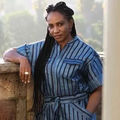Interviews
Proper fitting shoes can enhance performance at Olympic
16 Feb '10
4 min read
As the world's athletes prepare to compete in Vancouver this month, one thing they may have in common is they all know the importance of a proper fitting sports shoe. According to the American Orthopaedic Foot & Ankle Society (AOFAS), proper fitting shoes provide cushioning, stability and can enhance performance and prevent injury. Ill fitting shoes can lead to bunions, corns, calluses, hammer toes, and other foot problems, problems all athletes can do without.
Thomas O. Clanton, MD, past president of the AOFAS, who practices in Vail, Colorado and treats many patients with sports related foot and ankle injuries says, "In athletic competition, the foundation for achieving the Olympic motto "Citius, Altius, Fortius" ("swifter, higher, stronger") is almost always the foot and ankle. Without a well-functioning foot and ankle enclosed in a properly fit and sport-appropriate shoe or boot, any number of difficulties may occur. This can range from painful blisters or calluses caused by improper fit to poor performance attributable to the wrong shoe-surface interface.
Sometimes the issue is fitting the shoe to accommodate an existing condition such as a bunion, a hammer toe, or a pump bump at the heel. Other times the shoe selection is more protective to prevent an injury such as having the best shoe for a specific foot type, as in a cavus (high-arched) foot. Occasionally, high level sports performance requires the addition of an orthotic device within the shoe or boot that can position the foot for its optimal biomechanical advantage. Whether you are an Olympic athlete or a weekend sports participant, paying attention to your shoe wear and to your feet can reward you with improved comfort and performance."
It can be hard to choose from the many different types of athletic shoes on the market. It is important to select shoe wear that is appropriate to the specific sport you participate in. There are differences in design and variations in material and weight, all deliberately designed to protect the areas of the feet that encounter the most stress in that particular athletic activity.
The AOFAS breaks down types of athletic shoes into seven categories: Running, Training, Walking; Court Sports (tennis, basketball, volleyball); Field Sports (soccer, football, and baseball); Winter Sports (figure skating, ice hockey, skiing) Track and Field; Specialty Sports (golf, aerobic dancing, bicycling) and Outdoor Sports (hunting fishing, boating).
The AOFAS offers the following tips for selecting properly-fitting athletic shoes:
• Try on athletic shoes after a workout or run at the end of the day. Your feet will be at their largest.
• Wear the same type of sock you wear for that sport.
• When the shoe is on your foot you should be able to freely wiggle all your toes.
• The shoes should be comfortable as soon as you try them on. There is no break-in period.
• Walk or run a few steps in your shoes. They should be comfortable.
Thomas O. Clanton, MD, past president of the AOFAS, who practices in Vail, Colorado and treats many patients with sports related foot and ankle injuries says, "In athletic competition, the foundation for achieving the Olympic motto "Citius, Altius, Fortius" ("swifter, higher, stronger") is almost always the foot and ankle. Without a well-functioning foot and ankle enclosed in a properly fit and sport-appropriate shoe or boot, any number of difficulties may occur. This can range from painful blisters or calluses caused by improper fit to poor performance attributable to the wrong shoe-surface interface.
Sometimes the issue is fitting the shoe to accommodate an existing condition such as a bunion, a hammer toe, or a pump bump at the heel. Other times the shoe selection is more protective to prevent an injury such as having the best shoe for a specific foot type, as in a cavus (high-arched) foot. Occasionally, high level sports performance requires the addition of an orthotic device within the shoe or boot that can position the foot for its optimal biomechanical advantage. Whether you are an Olympic athlete or a weekend sports participant, paying attention to your shoe wear and to your feet can reward you with improved comfort and performance."
It can be hard to choose from the many different types of athletic shoes on the market. It is important to select shoe wear that is appropriate to the specific sport you participate in. There are differences in design and variations in material and weight, all deliberately designed to protect the areas of the feet that encounter the most stress in that particular athletic activity.
The AOFAS breaks down types of athletic shoes into seven categories: Running, Training, Walking; Court Sports (tennis, basketball, volleyball); Field Sports (soccer, football, and baseball); Winter Sports (figure skating, ice hockey, skiing) Track and Field; Specialty Sports (golf, aerobic dancing, bicycling) and Outdoor Sports (hunting fishing, boating).
The AOFAS offers the following tips for selecting properly-fitting athletic shoes:
• Try on athletic shoes after a workout or run at the end of the day. Your feet will be at their largest.
• Wear the same type of sock you wear for that sport.
• When the shoe is on your foot you should be able to freely wiggle all your toes.
• The shoes should be comfortable as soon as you try them on. There is no break-in period.
• Walk or run a few steps in your shoes. They should be comfortable.
Popular News
Leave your Comments
Editor’s Pick
Bijou Kurien
Retailers Association of India (RAI)
































-Ltd..jpg?tr=w-120,h-60,c-at_max,cm-pad_resize,bg-ffffff)





.jpg?tr=w-120,h-60,c-at_max,cm-pad_resize,bg-ffffff)
.jpg?tr=w-120,h-60,c-at_max,cm-pad_resize,bg-ffffff)






